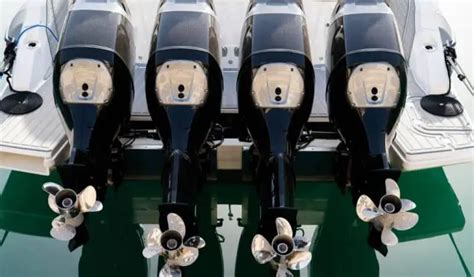Outboard Shaft Length: Maximizing Your Boat's Performance
Choosing the right outboard motor shaft length is crucial for optimal boat performance and safety. Getting it wrong can lead to poor handling, reduced efficiency, and even damage to your motor or boat. This comprehensive guide will help you understand the importance of shaft length selection and how to determine the correct one for your vessel.
What is Outboard Shaft Length?
Outboard shaft length refers to the distance from the cavitation plate (the bottom of the outboard motor) to the top of the anti-ventilation plate. It's measured in inches and is a critical specification when selecting an outboard motor. Common shaft lengths include short (15"), long (20"), extra-long (25"), and extra-extra-long (30"). The appropriate length ensures your propeller operates at the optimal depth in the water, regardless of the boat's load or sea conditions.
Why is Choosing the Right Shaft Length Important?
The right shaft length is vital for several reasons:
- Optimal Propeller Depth: A correctly sized shaft ensures the propeller operates at the ideal depth, maximizing thrust and efficiency. Too short a shaft can cause ventilation (the propeller losing contact with the water), while too long a shaft can lead to poor handling and reduced performance.
- Preventing Cavitation: Cavitation occurs when the propeller spins too fast, creating vapor bubbles that reduce thrust and can damage the propeller. The correct shaft length helps prevent cavitation by ensuring the propeller remains submerged.
- Improved Fuel Efficiency: A properly positioned propeller reduces drag and improves fuel efficiency.
- Enhanced Boat Handling: The correct shaft length contributes to better handling and maneuverability.
- Avoiding Damage: Incorrect shaft length can damage the lower unit of the outboard motor or even the hull of the boat.
How to Determine the Correct Outboard Shaft Length?
Determining the correct shaft length requires considering several factors:
- Boat Hull Design: The design of your boat's hull significantly influences the required shaft length. Deeper-V hulls generally require longer shafts than shallow-V hulls.
- Boat Load: The weight of passengers, gear, and fuel affects the boat's draft (how deep it sits in the water). A heavier load may require a longer shaft.
- Water Conditions: Operating in shallow water or rough seas might necessitate a shorter shaft to avoid hitting submerged objects or experiencing excessive ventilation.
What is the difference between short and long shaft outboards?
The primary difference between short and long shaft outboards lies in the distance from the cavitation plate to the top of the anti-ventilation plate. A short shaft is typically 15 inches, while a long shaft is usually 20 inches. This difference directly impacts the propeller's position in the water, affecting performance, efficiency, and the avoidance of ventilation. Choosing incorrectly can severely impact your boating experience.
How do I know if my outboard shaft is the right length?
You should observe the propeller's performance. If the propeller is frequently ventilating (coming out of the water), you likely need a longer shaft. If the boat is difficult to plane or feels sluggish, even with the correct propeller pitch, a longer shaft might be needed. Conversely, if the lower unit sits too deep in the water, a shorter shaft could be more appropriate. However, assessing this correctly often requires some boating experience, and in cases of doubt, consulting a marine professional is recommended.
Can I change the shaft length on my outboard motor?
No, you cannot easily change the shaft length of an outboard motor. The shaft is an integral part of the lower unit assembly and requires specialized tools and expertise to modify. Attempting this yourself is strongly discouraged and potentially dangerous. If you require a different shaft length, you need to purchase a new outboard motor with the appropriate specification.
What happens if I use the wrong shaft length?
Using the wrong shaft length can lead to a range of problems: reduced performance, increased fuel consumption, difficulty planing, propeller ventilation (causing loss of thrust and potential damage), and even damage to the lower unit or boat hull. It's crucial to choose the correct shaft length for safe and efficient operation.
Choosing the correct outboard shaft length is a critical decision that significantly impacts your boating experience. Careful consideration of your boat's hull design, typical load, and operating conditions, along with seeking professional advice when necessary, ensures optimal performance, safety, and longevity of your outboard motor and boat. Remember, selecting the right shaft length isn’t just about performance—it's about safety.

